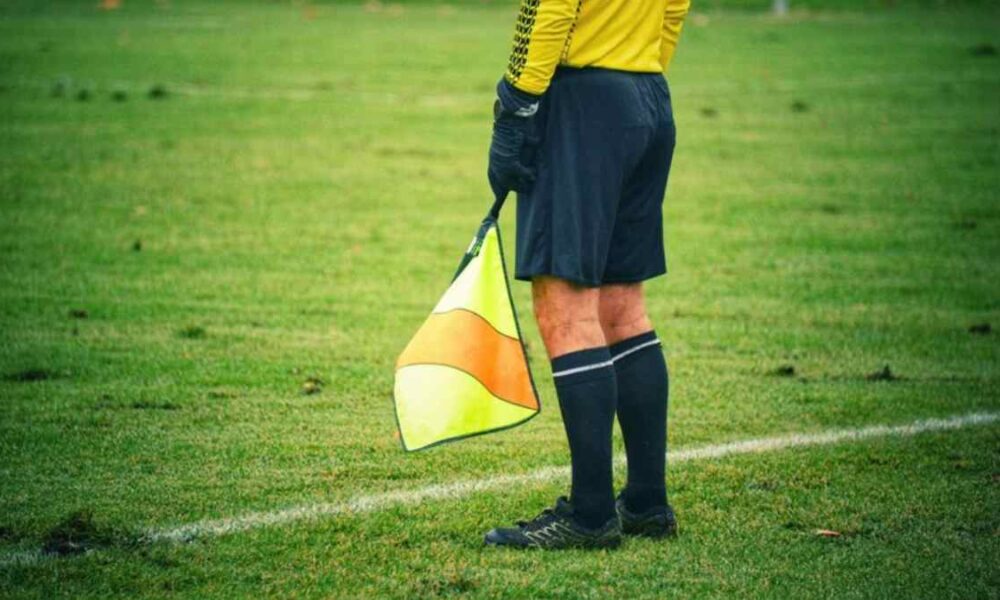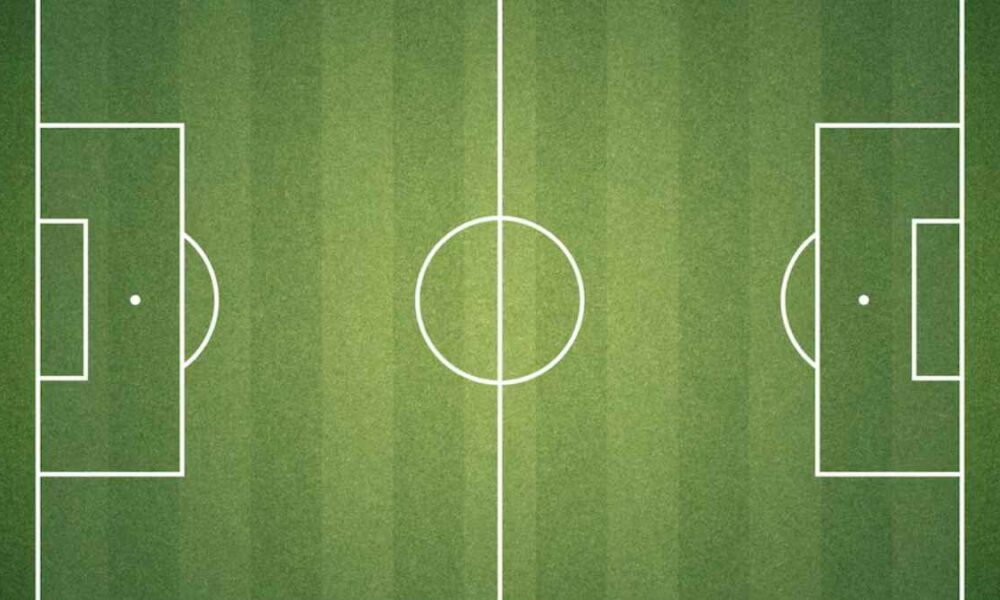Calling all sports enthusiasts and aspiring officials! Have you ever wondered what that colorful flag is for, fluttering in the hands of the umpire on the field? Well, get ready to dive into the fascinating world of ump flags and discover their vital role in sports officiating. From soccer fields to baseball diamonds, these little pieces of fabric hold immense significance in ensuring fair play and maintaining order during intense competitions. So, grab your whistle and join us as we unravel the secrets behind this essential tool – the ump flag!
History and Evolution of the Umpire Flag
The history and evolution of the umpire flag is a fascinating journey that spans across different sports and time periods. The use of a flag as a means of communication between officials and players has been around for centuries, with its origins dating back to ancient civilizations.
In ancient Rome, for example, gladiatorial contests were officiated using flags to indicate specific rulings or actions. This early form of signaling evolved over time as more organized sports emerged. In cricket, for instance, umpires began using white handkerchiefs tied to sticks to signal decisions on the field.
As sports continued to evolve and become more complex, so did the design and functionality of umpire flags. Today, we see various types of flags used in different sports such as soccer, football, rugby, and basketball. These flags are designed with bright colors and durable materials to ensure visibility from a distance.
The introduction of technology in modern-day sports has also influenced the evolution of umpire flags. For instance, electronic flags equipped with sensors can now transmit signals directly to scoreboards or other devices for instant display.
The history and evolution of the umpire flag showcase how this simple tool has adapted over time to meet the changing needs of sports officiating. It highlights the importance placed on effective communication between officials and players during games.
Stay tuned for our next section where we explore the different types of umpire flags used in various sports!
The Different Types of Ump Flag
Ump flags come in various types, each designed to serve a specific purpose on the field. Let’s take a closer look at some of the different types of ump flags.
First up, we have the traditional penalty flag. This flag is used by officials to indicate that a penalty has been committed by one of the teams. It’s usually bright red or yellow in color, making it highly visible to both players and spectators.
Next, we have the down indicator flag. This type of flag is often used in American football to indicate which down it is during a game. The official holds up fingers on one hand while displaying this flag with their other hand, helping everyone keep track of the downs.
Another commonly seen umpire flag is the touchback indicator. Used primarily in football and rugby, this flag signifies that a player has caught or recovered a kicked ball in their own end zone and decided not to advance it further.
In addition to these main types of ump flags, there are also specialized flags for different sports such as soccer and baseball. These flags may be used for signaling offsides or indicating fair/foul balls respectively.
Each type of umpire flag serves an important role in maintaining fairness and order during sports games. By understanding how they differ from one another, officials can effectively communicate with players and ensure smooth gameplay.
Importance of Ump Flag in Sports Officiating
Ump flags play a crucial role in sports officiating, serving as a visual communication tool between officials, players, and spectators. These brightly colored flags are not just for show – they convey important messages that help maintain fairness and order on the field.
One of the key reasons why ump flags are so vital is their ability to signal various infractions and penalties. By using different flag gestures, officials can quickly communicate their decisions to both teams and ensure that everyone understands the calls being made. This helps prevent confusion or disputes among players, coaches, and fans.
Another aspect worth highlighting is how ump flags contribute to player safety. When an official raises his or her flag to indicate an injury or stoppage in play due to dangerous conditions on the field (such as lightning), it immediately alerts both teams about potential risks. This quick response can potentially prevent further injuries by allowing players to seek shelter or take necessary precautions.
Furthermore, umpire flags also serve as tools for managing game flow effectively. By utilizing specific flag signals like time-outs or clock management indicators (such as counting down remaining seconds), officials can control the pace of the game while keeping all participants informed about critical moments during play.
In conclusion, Umpire flags may seem like small pieces of fabric held by officials on the sideline but their significance cannot be underestimated in sports officiating. From signaling penalties to ensuring fair play and promoting player safety, these colorful symbols provide essential communication cues during games across various sports disciplines. So next time you watch your favorite sport live or on TV, pay attention when those flags are raised – they hold the key to maintaining order and fairness on the field
How to Properly Use an Ump Flag
Using an ump flag correctly is essential for sports officials to effectively communicate with players, coaches, and spectators. Here are some key tips on how to properly use an ump flag:
- Familiarize yourself with the different signals: Before stepping onto the field, make sure you know the various hand signals associated with the ump flag. These signals serve as a universal language between officials and participants.
- Be clear and decisive: When making a call using your ump flag, it’s crucial to be confident in your decision and convey it clearly to everyone involved. Use deliberate movements and avoid any ambiguity that could lead to confusion or disputes.
- Maintain proper positioning: Positioning is vital in officiating any sport, including when using an ump flag. Make sure you have a good line of sight and are positioned where you can accurately observe plays while being visible to all parties.
- Practice effective communication: In addition to signaling specific calls with your ump flag, verbal communication is also important. Clearly announce each call so that everyone understands what has been decided.
Remember that mastering the correct usage of an umpire flag takes time and practice. By following these guidelines consistently and adapting them as needed for different sports or scenarios, you’ll become more proficient at utilizing this essential tool for effective sports officiating.
Common Misconceptions about Ump Flag
Ump flags are an essential tool for sports officials, but there are some common misconceptions surrounding their use. Let’s debunk these myths and set the record straight.
Misconception 1: Ump flags are only used in football.
Contrary to popular belief, ump flags are not exclusive to football. They can be found in various sports such as soccer, rugby, field hockey, and even basketball. These brightly colored flags serve as a visual signal to communicate important decisions or fouls during a game.
Misconception 2: Ump flags are solely for making penalties.
While it is true that ump flags are often used to indicate penalties or infractions committed by players, they also have other crucial functions. For example, in soccer, an umpire may raise the flag to signal an offside position or a goal kick. In rugby, a touch judge might wave the flag to indicate when the ball goes out of bounds.
By dispelling these misconceptions about ump flags, we can appreciate the importance of these tools in sports officiating.
Did the Womans Soccer Team Hold a The Ump Flag
The use of ump flags is not limited to any specific sport or gender. In fact, ump flags are often utilized in a variety of sports, including soccer. When it comes to women’s soccer teams, the presence of an ump flag can be just as important as it is in any other game.
While there may be some misconceptions about whether or not women’s soccer teams hold an ump flag, the truth is that they do. Ump flags are essential tools for sports officials regardless of the level or gender of the athletes they officiate.
Ump flags serve several purposes during a game. They allow referees and officials to communicate with players and coaches without disrupting play. For example, when a referee raises their flag, it typically indicates that a foul has been committed or that there is an offside infringement.
While certain elements may differ between men’s and women’s soccer games – such as rules and regulations – one thing remains constant: The importance of using an ump flag for effective officiating. So next time you watch a women’s soccer match and see a referee holding up their trusty old red-and-white striped tee-ump flag high in the air – know that its purpose extends far beyond just adding color to the field!
Conclusion
The Ump Flag is undeniably an essential tool for sports officials. It serves as a visual communication device that allows officials to make quick and accurate calls on the field. Without the ump flag, officiating would be much more challenging and prone to errors.
The use of an ump flag provides clarity and transparency in decision-making. When an official raises their flag, it signals to everyone involved – players, coaches, and spectators – that a call has been made or a situation needs attention. This reduces confusion and ensures that everyone is aware of what is happening on the field.
Furthermore, the ump flag helps maintain order and control during games. By using specific hand signals along with the flag, officials can effectively communicate penalties or fouls to players without disrupting gameplay unnecessarily. This keeps matches fair and prevents disputes or confrontations between teams.
Additionally, the presence of an ump flag instills confidence in both players and fans alike. Knowing that there are trained officials equipped with tools like flags gives reassurance that decisions will be made impartially based on established rules and regulations.
Moreover, the use of different colored flags allows for efficient communication between multiple officials working together in a game. Each color represents a specific message or instruction which aids in coordination among referees ensuring consistency in their calls throughout the match.
In conclusion, it’s clear that the umpire flag plays a vital role in sports officiating across various disciplines including soccer, football, basketball,and many others (avoid repetitive phrases). Its history speaks volumes about its importance as it continuously evolves alongside changes in sporting regulations (avoid summarizing previous sections). So next time you’re watching your favorite sport or even participating yourself remember how crucial this small piece of fabric truly is!
FAQs
What is the purpose of an umpire flag?
The primary purpose of an umpire flag is to communicate important signals and decisions to players, coaches, and spectators during a sports game or match. It serves as a visual aid for officials to indicate various calls such as fouls, penalties, offsides, or out-of-bounds situations.
How do you properly use an umpire flag?
To ensure effective communication on the field, it’s crucial to understand how to use an umpire flag correctly. When making a call or signaling a decision, hold the flag firmly in your dominant hand and raise it above your head with confidence. Use clear and concise motions that are easily visible from all angles.
Are there different types of umpire flags?
Yes! There are different types of umpire flags available based on personal preference and sport-specific requirements. Some common types include solid-colored flags (usually red or yellow) for indicating penalties or infractions, checkered flags for denoting offside violations in soccer, and even electronic flags equipped with LED lights for enhanced visibility in low-light conditions.
Can I customize my own umpire flag?
Absolutely! Many manufacturers offer customization options for personalized umpire flags. You can choose specific colors, add logos or text according to your preferences or team affiliation.
Can women’s soccer teams also use an umpire flag?
Yes! Umpire flags are not limited by gender; they can be used by both men’s and women’s soccer teams alike (or any other sport where officiating requires visual signals). The importance of accurate officiating applies across all levels of competition regardless of gender.










